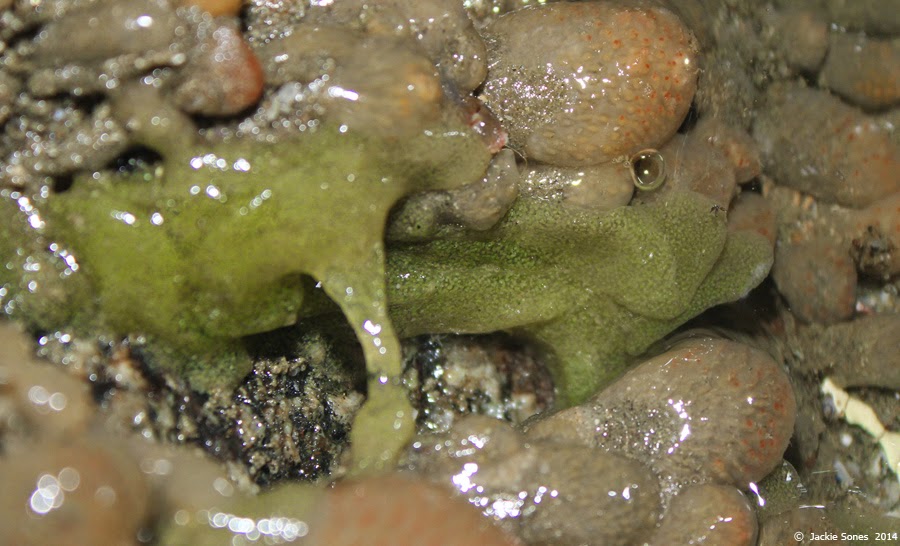Yes, those three little brown bumps on the barnacle-covered rock are nudibranchs. Meet Onchidoris bilamellata. The white ribbon in the upper right corner of the image is an egg ribbon, probably laid by one or more of the nudibranchs.
Believe it or not, Onchidoris bilamellata is a barnacle-eater! They feed on acorn barnacles by "sucking out the body contents by means of an oral pumping mechanism" (Morris, Abbott, and Haderlie 1980).
Below is a zoomed in view of the lower two nudibranchs. You can see that some of the barnacles next to the nudibranchs are empty. Were they eaten? Can a living barnacle sense an approaching nudibranch? Do the barnacles close up tightly to try to prevent entry by the nudibranch?
In 2012, I photographed a larger aggregation of Onchidoris bilamellata. They were just starting to lay eggs. It's fun to see the variation in size and coloration. How many individuals can you find the next picture?
Are you ready? I've given it my best shot and have labeled the individuals I counted in the next picture.
[I counted 11 nudibranchs when I scanned the image above.]
Looking at Onchidoris bilamellata out of the water doesn't really do it justice. I don't have great pictures of it underwater yet, but here's one image from 2011 (below). You can see the two rhinophores (sensory structures) on the left end; the rounded, club-shaped papillae; and the circle of gills on the right end.























